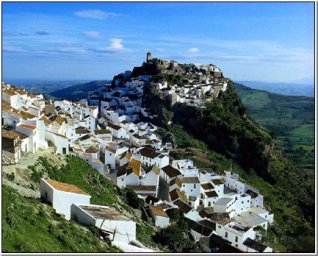Andalusia
Flamenco rhythms
Sun and sea
The Alhambra in Granada
Doñana national park
Stretching from the Atlantic to the Mediterranean across the south of the Iberian peninsula, this is Spain’s second largest region and easily the most varied. It is the home to all things “typically Spanish”: sherry, flamenco, guitars, tapas, gypsies, bullfighting, white towns and the Costa del Sol. Blazing Mediterranean sunshine makes it a good place for beach holidays, but it is not short of countryside or grandiose monuments either.
The superb Moorish architecture of Granada’s Alhambra Palace and the Mezquita in Cordoba continue to dazzle visitors.
The region’s landscapes vary enormously from the wildlife refuge of Doñana to Europe’s only desert in Almería.
The Alhambra
The Alhambra in Granada is a marvel of Islamic architecture. This medieval acropolis is composed of luxurious palaces and gardens whose refined arabesques and geometric motifs tell of the Muslim presence in Andalusia from the eighth to the fifteenth century.
Alhambra Palace
Alhambra palace situated in city of Andalusia in Spain. The first part of this palace construction in 9th century, damaged and ignored for more than 2 centuries. It was renovated by Muhammad ben Al-Ahmar in 11th century, transformed into current palace by Sultan of Granada in 1333.
The whole sections of Alhambra palace were whitewashed, today it appears as reddish one because of centuries of baking in sunlight. As Alhambra place located at hilltop, can viewed from various part of the city.
The Alhambra, the complete Arabic form of which was Qalat Al-Hamra, is a palace and fortress complex located in Granada, Andalusia, Spain. It was originally constructed as a small fortress in AD 889 on the remains of Roman fortifications, and then largely ignored until its ruins were renovated and rebuilt in the mid-13th century by the Moorish emir Mohammed ben Al-Ahmar of the Emirate of Granada, who built its current palace and walls. It was converted into a royal palace in 1333 by Yusuf I, Sultan of Granada. After the conclusion of the Christian Reconquista in 1492, the site became the Royal Court of Ferdinand and Isabella, and the palaces were partially altered to Renaissance tastes. In 1526 Charles I & V commissioned a new Renaissance palace better befitting the Holy Roman Emperor in the revolutionary Mannerist style influenced by Humanist philosophy in direct juxtaposition with the Nasrid Andalusian architecture, but which was ultimately never completed due to Morisco rebellions in Granada.
Alhambra’s late flowering of Islamic palaces were built for the last Muslim emirs in Spain during the decline of the Nasrid dynasty who were increasingly subject to the Christian Kings of Castile. After being allowed to fall into disrepair for centuries, the buildings occupied by squatters, Alhambra was rediscovered following the defeat of Napoleon, who had conducted retaliatory destruction of the site, the re-discoverers were first British intellectuals and then other north European Romantic travelers. It is now one of Spain’s major tourist attractions, exhibiting the country’s most significant and well-known Islamic architecture, together with 16th-century and later Christian building and garden interventions. The Alhambra is a UNESCO World Heritage Site and the inspiration for many songs and stories.

